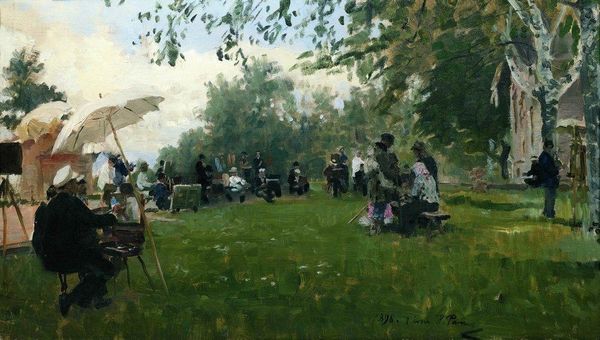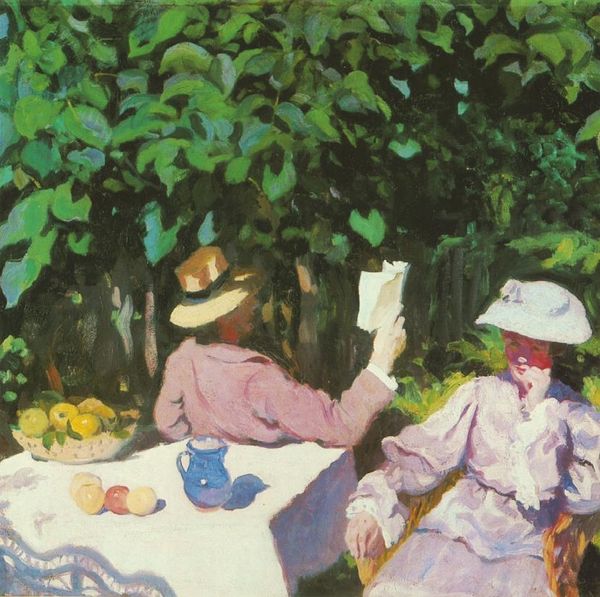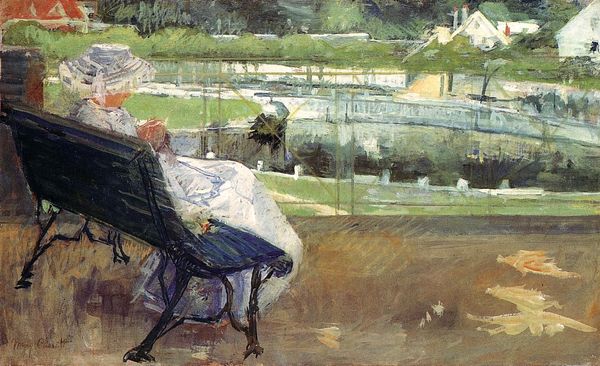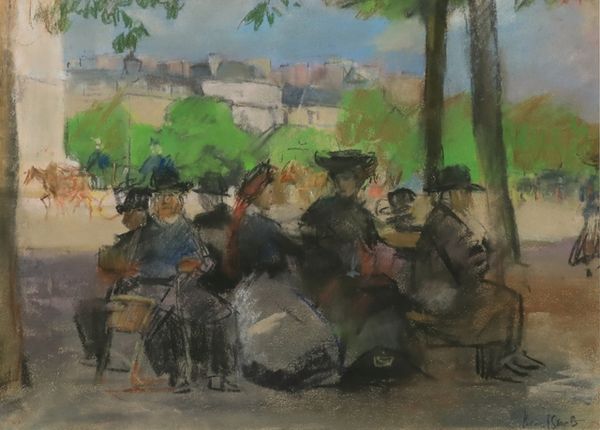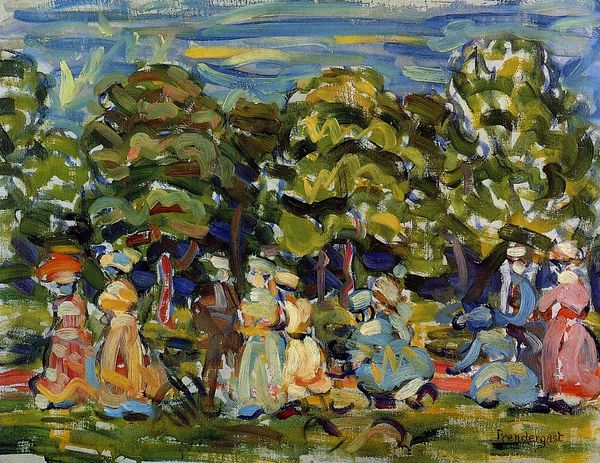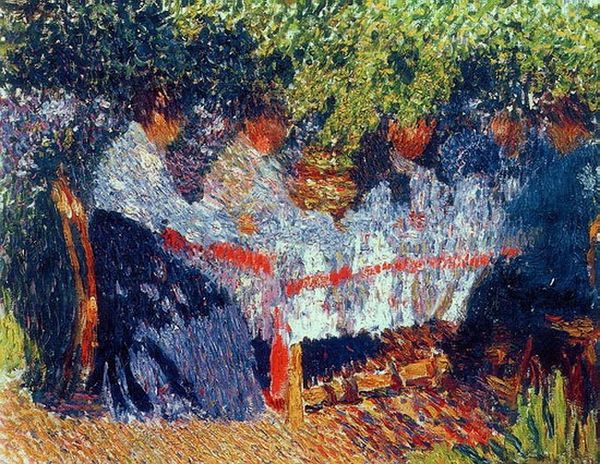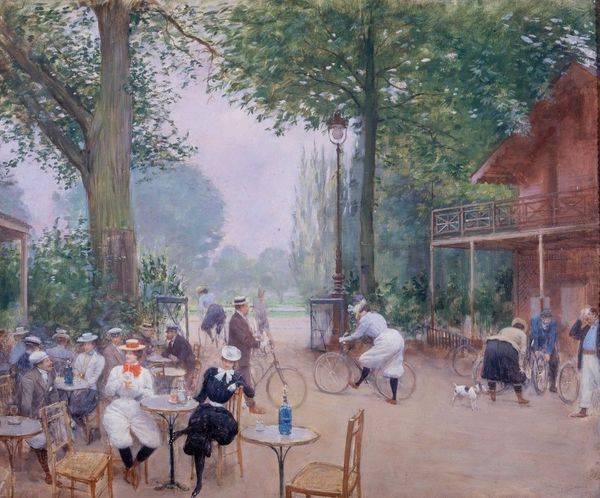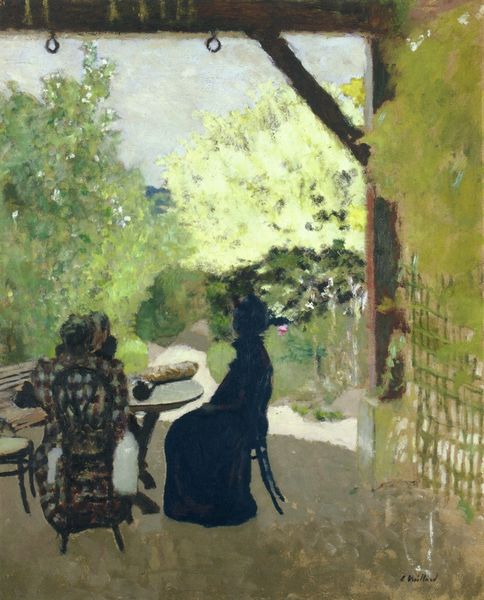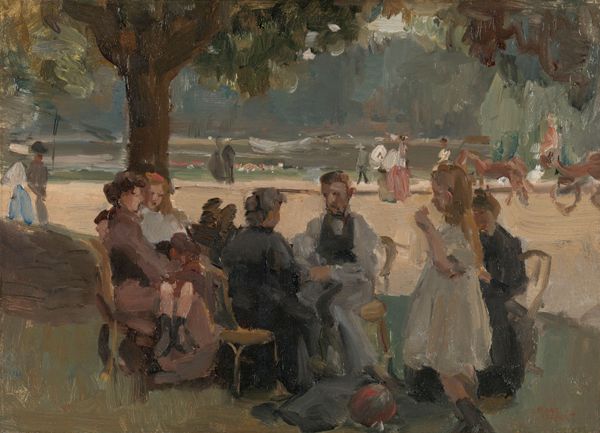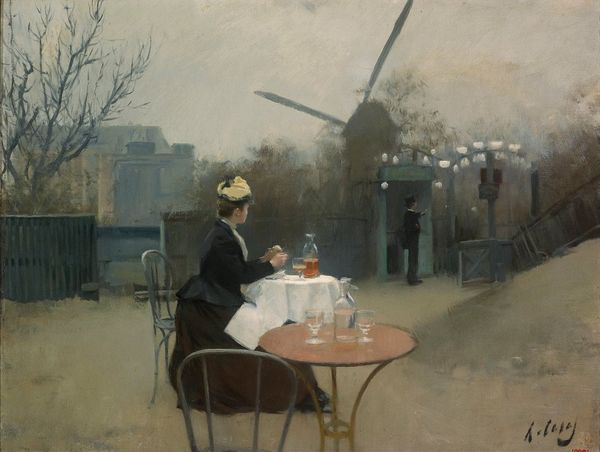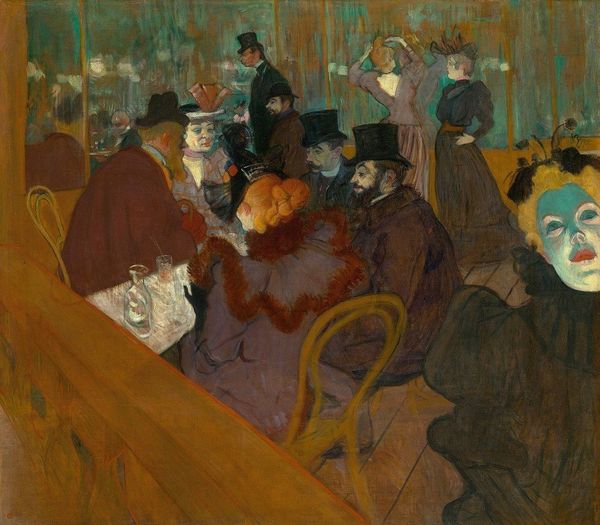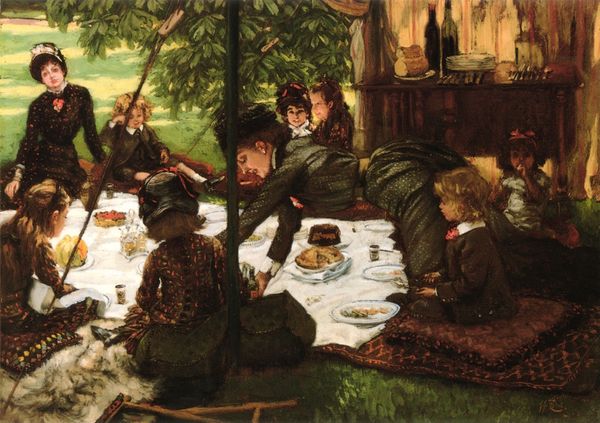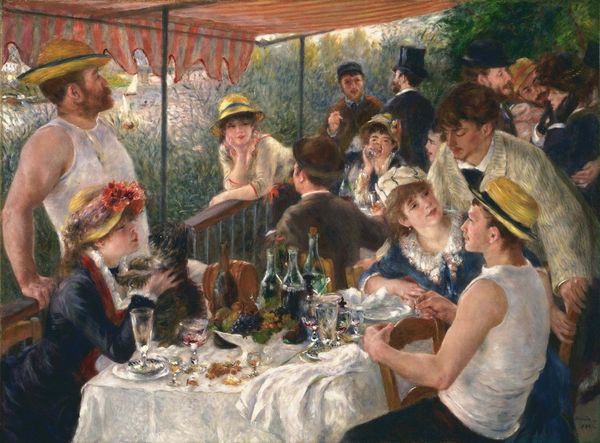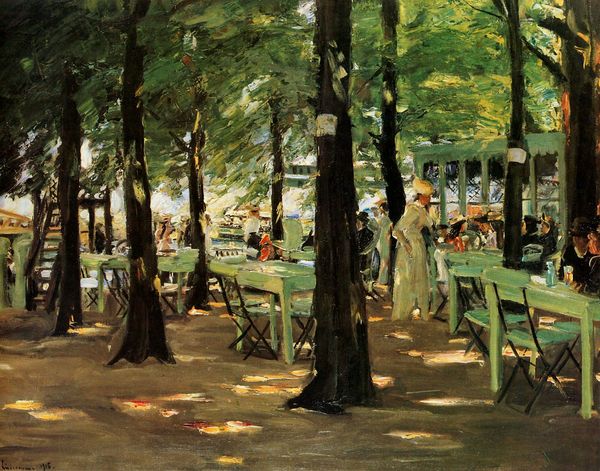
painting, oil-paint, impasto
#
painting
#
oil-paint
#
landscape
#
oil painting
#
impasto
#
group-portraits
#
romanticism
#
genre-painting
#
realism
Copyright: Public domain
Curator: Ilya Repin, though undated, gifts us with "Picnic," a vibrant oil painting rendered with palpable impasto. It's incredibly lush. Editor: It is! I’m immediately struck by the visual abundance. The thickness of the paint and vibrant greens really convey a sense of opulent leisure. Curator: Look at the table setting. A crisp white cloth contrasting against the figures in darker clothes. Note the quick, gestural brushstrokes that suggest glassware, perhaps, catching the light. Consider the material culture represented here, those signifiers of wealth and status allowing for such pursuits as open air leisure and display. Editor: Those figures draw the eye, definitely. I find the red of one figure’s jacket really pops, anchoring the whole composition. Red, historically, could represent vitality, passion… or even a subtle warning depending on its placement and surrounding symbols. Does this splash of colour subvert the perceived tranquil nature of this ‘picnic’? Curator: Possibly. Though, focusing on production, think about the artist themselves sourcing and affording the paints. The pigments, ground by hand by labourers, or even, likely pre-prepared tubes by the latter 19th century when we think this was painted… all made readily accessible by the industrial revolution for Repin and many more artists. And oil paint allowing a new level of depth to image creation... Editor: Yes, but depth also in its potential meaning! What stories could these people tell? Are they friends, family? What roles do they occupy in this society to afford such luxuries as picnics in the first place? Their dress codes convey this too! Are those walking in the background simply there to set the stage, or should we, the viewers, also question the role they perform? Curator: I see them more as added depth to the social tapestry Repin renders. By placing these more ambiguous or simply less visible characters behind and away, and given their clothes of clearly lower materiality than those picnicking, it reminds the viewer that they are on a tiered landscape of making-doing-consuming that relies heavily on available and allocated means of production for some. Editor: Hmm. But maybe that is what picnics historically signify. A way of marking cultural and personal occasions with a series of signifiers and traditions, embedded with both conscious and subconscious meanings we've now excavated further! Curator: Yes, from pigments and production to perception and class portrayal...a deeper exploration allows understanding of what it meant, materially and figuratively, to enjoy "Picnic."
Comments
No comments
Be the first to comment and join the conversation on the ultimate creative platform.
